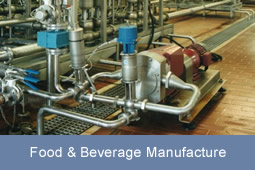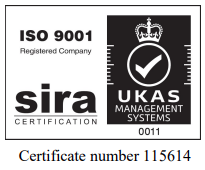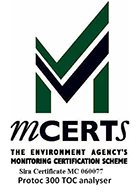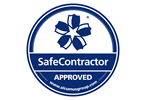Pollution Risk
Traditionally chemical storage within tanks and vessels, have been bunded to safeguard the accidental release of product to the local environment. However, the risk of chemical spillage still remains during delivery and transit across the site. If left undetected, the spill may enter a drainage system and migrate into a local water course, sometimes with devastating effect. Additionally, contamination may be derived from palletised deliveries, temporary stored outside bunded locations or from vehicles parked on hard-standing. On-line continuous monitoring can identify and alarm the presence of pollution so corrective action can be immediately taken. Once pollution enters a sub-surface drainage system, the continuous measurement device must respond quickly and reliably to detect the event. The instrumentation may be integrated with spill control technology such as the Terminator, to arrest flows and isolate the spillage.
Surface Water
Although often considered as "clean", surface water derived from hard-standing is particularly at risk from pollution. Chemical manufacturers, engineering companies and airports have installed continuous monitors to detect, divert or contain spillages affecting surface water quality.
Dissolved Organic Chemicals (TOC)
Total Organic Carbon (TOC) measurement has been widely used to determine the presence of dissolved organic substances. For example, international and military airports use Ethylene Glycol to de-ice aircraft and runways. The surplus is washed into the drainage system by melt-water and rainfall. The Protoc® Total Organic Carbon (TOC) analyser has been installed to continuously monitor for contaminated surface water (which can be diverted for treatment), protecting local water courses from polluted discharge. The Protoc® TOC analyser technology with sample preparation, may be pre-installed within frost protected walk-in analyser kiosks. If the kiosks are positioned airside, then they are supplied with a two-colour (BS4800 range) stripped finish, to make them highly visible.
Oil on Water
Oil is also a common pollutant. Many industries have stringent discharge consents imposed often stipulating "no visible traces". Although abatement systems may be in place (e.g. oily water separators), it is important to identify spillages at source and monitor discharges to show compliance with imposed regulations. Oil on water detection using a non-contact laser measurement technology, can be installed to alarm the presence of oil at approximately 1 micron thickness or at the visible trace threshold.
pH measurement
The measurement of pH detects the presence of acids or bases used extensively through out the industrial sector. The measurement may be performed in-situ within the drainage system and can quickly respond to the ingress of chemicals affecting the surface water quality.
Conductivity measurement
The measurement of conductivity may be useful to identify the presence of salts and significant contamination events, affecting water quality. Since the measurement technology is of solid-state construction and can be directly mounted into a drainage system, it is often used to compliment pH measurement.
Turbidity measurement
The measurement of turbidity characterises the physical water quality or the amount of material suspended within the water body. Once again, a probe technology may be used to provide direct in-situ measurement and a fast speed of response. The measurement is particularly useful for industrial applications where the ingress of a pollutant affects the optical appearance e.g. diary, landfill, mineral excavation, milling, paint manufacture etc.
Other Parameters
Other parameters, which are often used to indicate pollution, are pH, Turbidity and Conductivity. In some instances, UV absorption (254nm) may also be a useful indicator of organic pollution and oil in water which may be determined by a UV-fluorescence technique.
Communications and Control
One or more continuous measuring devices may be integrated with a spill control system such as the Terminator, to arrest or re-circulate flows and prevent discharge of pollution to rivers. Real-time event notification is also possible. Alarm outputs from the continuous measuring device may be connected to an existing telemetry system, to an audible siren or a visual beacon. Alternatively, GSM communication technology can be used to send email notification and collect measurement data for remote access.
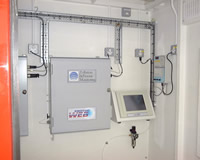
Birmingham airport kiosk
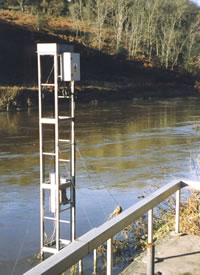
Oil on water
More information? Get in touch!
If you would like more information relating to this product or the services Pollution PPM can provide, please Contact Us.
For International enquiries, please contact one of our dealers listed on the following page - International Dealers











